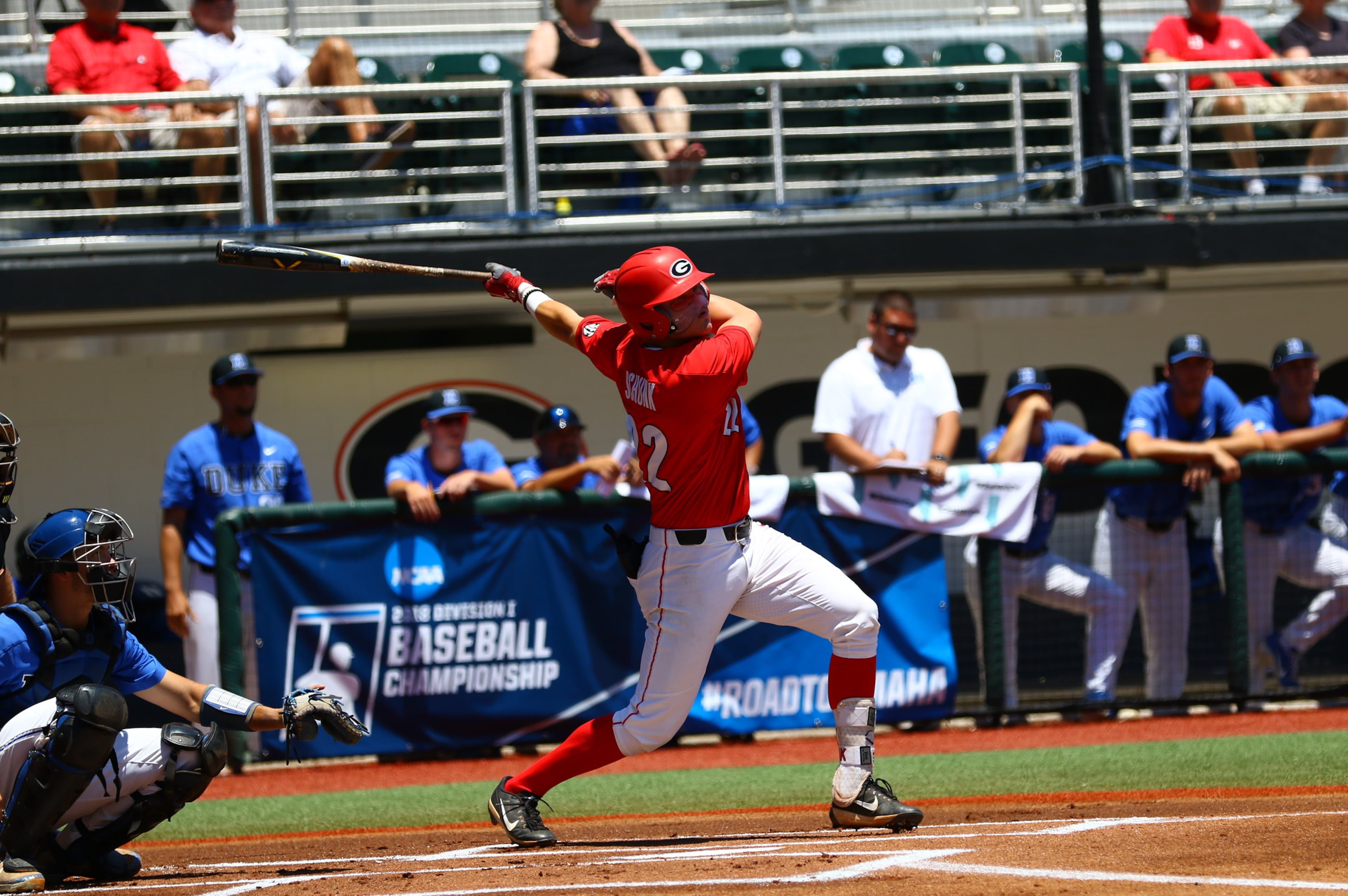Braves select left-hander Jared Shuster with 25th pick in draft
The Braves selected Wake Forest left-handed pitcher Jared Shuster with their first-round pick, No. 25 overall, in the Major League Baseball draft Wednesday night.
Shuster, 21, is lauded for his change-up, which produced over a 60% whiff rate and was considered one of the best in this class.
“For the last week or so, I’d been in contact with (the Braves) a lot,” Shuster said. “Honestly, I didn’t know (they’d pick me) until a couple minutes before the pick was in. It was a really exciting moment for me and my family.”
A Massachusetts native, Shuster stands at 6-foot-3, 210 pounds. Over the past year, he’s shown considerable growth with his command while his velocity has played up into the mid-to-high 90s, touching 97 mph.
His breakthrough occurred during last summer’s Cape Code League. Shuster opened eyes, going 4-0 with a 1.36 ERA and earning All-Star labeling.
“We value that he has both size and strength,” said Braves vice president of scouting Dana Brown. “Arm strength up to 95 (mph) with a plus change-up combination. He has a pretty good feel for his slider. We feel good about getting a left-handed starter with a three-pitch mix.”
Before the breakout, Shuster struggled in the college ranks. He owned a career 6.17 ERA across 128-1/3 innings over three seasons in Winston-Salem (41 appearances). He did have a 169:62 strikeout-to-walk ratio, which included 12.4 strikeouts per nine innings in his sophomore season, the third-highest mark in school history.
His improvement from the Cape Cod League translated through four starts this season, when he posted a 3.76 ERA with 43 strikeouts against only four walks before the pandemic ended the campaign. He pitched 26-1/3 innings.
“One of the things we talked to him about, and he explained to us, was his delivery,” Brown said. “He got more of a hip turn and got into his lower half. Getting strength from the lower half allowed him to increase his velocity and improve both the change-up and breaking ball. We feel like this is a pitcher with upside. We think the aptitude is really good and there’s a chance this guy could be a three-pitch mix with above-average-to-plus stuff.”
Shuster said the hip turn “was a big emphasis” over the offseason. Brown noted his velocity hovered in the 91-95 range during the shortened season, a leap from the 89-92 range last summer.
“He made that jump, which is outstanding,” Brown said.
While Shuster’s development is encouraging, he carries risk because teams still haven’t seen that much of his new look. The Braves are betting he’ll continue the rapid growth exhibited over the last calendar year.
His profile is obvious, nonetheless: He’ll rely on his fastball-change-up combo. His best self will be determined in how the breaking ball comes along.
“I was expecting to improve and get a lot better, and I’m glad I did,” Shuster said. “I feel like I have a very high ceiling and I’m going to work every day to reach that ceiling.”
When asked if there were any pitchers he studied or tried to emulate, Shuster named two lefties: Cole Hamels and Clayton Kershaw. The former is a current Brave who’s displayed a dominant change-up for over a decade.
“He’s a guy I’ve watched for a long time,” Shuster said. “He’s had a great big-league career, so (meeting him) would be exciting.”
Brown suggested Shuster could start at a higher level in the minors given his college experience and strike-throwing propensity. “That would put him on a faster track,” Brown said.
Shuster is the seventh first-round pick in Wake Forest history. Baseball America ranked him the 43rd overall prospect in the class, while MLB Pipeline had him 77th.
The Braves hope to sign him under slot value ($2,740,300). The team has a bonus pool of $4,127,800, which is the third-lowest total in the majors.
“From an early age, just watching Chipper Jones, Greg Maddux, Tom Glavine,” Shuster said of his background knowledge on the Braves. “A team with a lot of history. I’m really excited to be part of the organization and hope to help win a couple championships in my career for Atlanta.”
The pick began the second draft under Brown, who was equipped with two first-round choices last year. The team selected two college players in 2019: catcher Shea Langeliers (No. 9) and infielder Braden Shewmake (No. 21).
After selecting Shuster, the Braves have taken a pitcher with their first pick in four of the past five drafts. Yet he’s the first collegiate lefty the team has chosen first since Sean Gilmartin in 2011.
Entering spring, Baseball America ranked the Braves’ system the fourth-best in baseball, but with a caveat: “The fall is coming. Two years from now, the Braves will likely rank among the bottom third in terms of farm system talent. By then, Atlanta will have graduated a steady stream of productive big leaguers, however, stretching back to Ozzie Albies’ 2017 arrival.”
The Braves have three more picks through the shortened five-round draft: No. 97, No. 126, No. 156. The team forfeited its second rounder in signing reliever Will Smith but gained an additional pick when slugger Josh Donaldson rejected their qualifying offer and signed with Minnesota.
“It’s tough when you lose a pick,” Brown said. “It’s always tough from my standpoint trying to run the draft, but you understand sometimes you lose picks to improve the major-league team.
“So strategically, we feel like we were able to get a good left-handed pitcher in the beginning. Maybe we can save some money on that pick and potentially sign some high-ceiling high school players who may slide in the draft. That could make up the gap for not having a second rounder.”
Brown will use those picks, in addition to the unique undrafted free agency that will follow, to replenish the organization's lower levels. Like most teams, the Braves recently trimmed their system of 30 players, with most of those likely to have been released in March or around the draft regardless of the pandemic. The team also lost over a dozen prospects in 2017 as punishment for international market violations, though those losses were felt more in quantity than quality.
After the five rounds conclude, players are free to sign with any team for no more than a $20,000 bonus. That reality will send many higher-regarded prospects back to school, but for those entertaining the offer, the Braves would be a desirable landing spot given the franchise’s reputation for player development (and winning).



